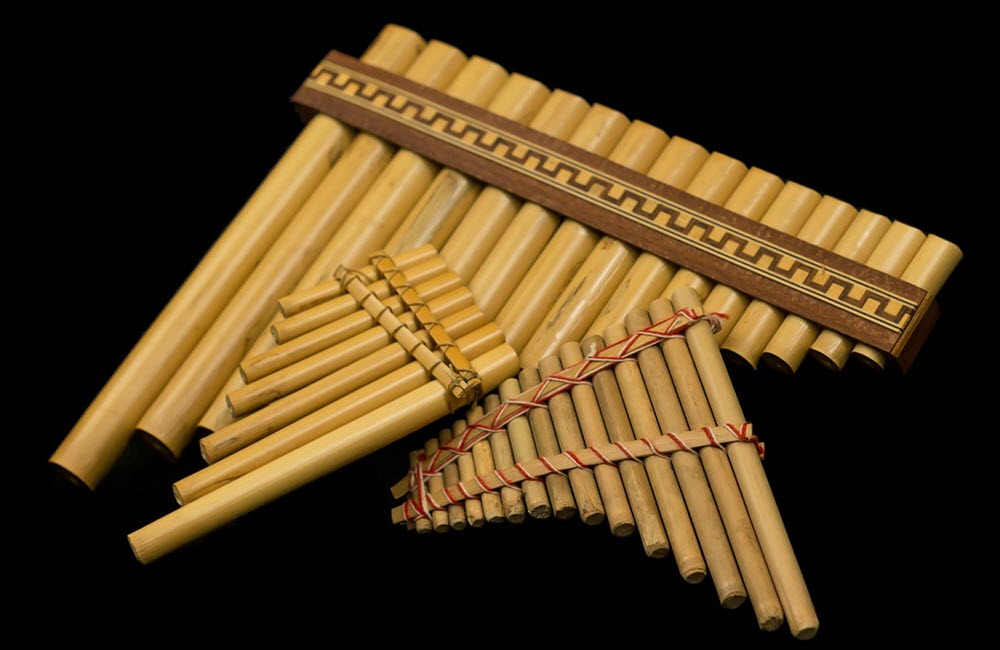The Historical Context of Pan Flutes
The pan flute, also known as the panpipe or syrinx, is a musical instrument that traces back to ancient civilizations, notably the Greeks and Romans. The name ‘pan flute’ is derived from the Greek myth of Pan, the god of nature and the wild, who supposedly crafted the first such instrument.
Pan flutes have been used in various cultures worldwide, from South America to Europe and Asia, each with its unique construction and playing style, thus becoming a universal music symbol.

Structure of the Pan Flute
A pan flute is essentially a set of graduated tubes, typically made from bamboo or reeds, and tied together to form a raft-like shape. The number of tubes varies depending on the region and musical traditions but commonly ranges from 10 to 24. Each tube is stopped at one end and arranged in order of length to produce a musical scale.
When air is blown across the open end of a tube, it resonates and generates a pitch, the frequency of which depends on the tube’s length—the shorter the tube, the higher the pitch.
Regional Variations of Pan Flutes
The instrument’s fundamental design has given birth to a plethora of regional variations. The Romanian “nai” has been used prominently in their folk music in Europe. It typically has 20 to 22 pipes made of bamboo or metal.
In the Andean region of South America, the “zampoña” is a key component of traditional music. It is typically a diatonic instrument with separate rows for playing the melody and the accompaniment.
Asian cultures, particularly in China and the Philippines, also have versions of pan flutes used in regional music, showcasing the instrument’s global impact.
Playing Techniques and Sound Production
Playing the pan flute involves blowing horizontally across the open ends of the tubes. The air-stream split by the edge of the tube creates vibrations inside the tube, producing sound.
Different techniques can be used to alter the sound produced. For instance, tilting the pipes against the lower lip changes the color of the sound, while articulation techniques like tonguing and vibrato can be used for musical expression.
Unlike many wind instruments, the pan flute does not have keys or finger holes to change the pitch. Instead, each tube corresponds to a specific pitch, and melodies are played by moving the instrument or the head to align the tubes with the player’s mouth.
Pan Flutes in Modern Music
While deeply associated with folk music, pan flutes have found their way into various music genres in the modern era, including classical, pop, and jazz. Renowned musicians like Gheorghe Zamfir from Romania and Simón Díaz from Venezuela have popularized the pan flute, showcasing its versatility and distinctive sound.
Some contemporary compositions also incorporate pan flutes, adding a unique layer to the musical texture. They have also gained popularity in film scores for their ability to create haunting and ethereal soundscapes.
Crafting Pan Flutes
Making a pan flute involves precision and craftsmanship. Due to their natural tubular shape and availability, traditional pan flutes are often made from bamboo or reeds. Each tube is carefully cut and cleaned, then sorted by length to form a scale when arranged together.
Modern pan flutes are also constructed from various materials, including wood, plastic, and metal. While these materials can create a consistent and durable instrument, many musicians still prefer traditional materials for their unique tonal qualities.
From their deep historical roots to their modern adaptations, pan flutes truly stand as an emblem of global musical heritage. The instrument’s unique design, versatility, and the alluring sound it produces continue to captivate both musicians and listeners alike, ensuring its enduring presence in the world of music. Whether played in a rural folk setting or a contemporary concert hall, the pan flute serves as a testament to humanity’s universal language – music.
This article was last updated on: July 17, 2023


